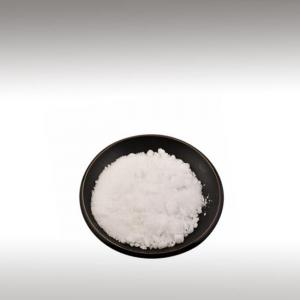
CAMPHOR CRYSTALS (CINNAMOMUM CAMPHORA) - INGREDIENTS

BASE / GENERAL DATA
Information submited: June 25, 2015 Modified: May 29, 2018 By: OperaDreamhouse
Camphor is a waxy, flammable, white or transparent solid with a strong aromatic odor. It is a Terpenoid with the chemical formula C10H16O.
It is found in the wood of the Camphor Laurel (Cinnamomum Camphora), a large evergreen tree found in Asia (Sumatra, Indonesia and Borneo ) and also of the unrelated Kapur tree, a tall timber tree from the same region.
It also occurs in some other related trees in the Laurel family, notably Ocotea Usambarensis. Dried Rosemary leaves (Rosmarinus Officinalis), in the Mint family, contain up to 20% Camphor.
It is used for its scent, as an ingredient in cooking (mainly in India), as an embalming fluid, for medicinal purposes, and in religious ceremonies. A major source of Camphor in Asia is Camphor Basil.
Camphor can also be synthetically produced from oil of turpentine, but we will talk about organic camphor ( Camphor Laurel (Cinnamomum Camphora)).
These plants are literally taking energy produced by the sun, combining it with oxygen, and producing miraculous pharmacological wonders.
The clippings, roots and wood chips of the camphor tree are processed to produce Camphor Crystals and Camphor oil. The sturdy tree has glossy dark green aromatic leaves. The wood repels insects, moths, and is very durable against the erosion of salt air. In days gone by, the wood was used by sailors to moth - proof their clothes.
Camphor derived from a natural cold extraction process of the Camphor tree, these Crystals are not chemicallyproduced.
The word "Camphor" derives from the French word "Camphre", itself from Medieval Latin "Camfora", from Arabic "Kafur", from Sanskrit "Karpūram".
The term ultimately was derived from Old Malay Kapur Barus which means "the Chalk of Barus". Barus was the name of an ancient port located near modern Sibolga city on the western coast of Sumatra island (North Sumatra Province, Indonesia). This port was initially built prior to the Indian - Batak trade in Camphor and spices.
Traders from India, East Asia and the Middle East would use the term Kapur Barus to buy the dried extracted ooze of Camphor trees from local Batak tribesmen. The Camphor tree itself is natively found in that region. In the proto - Malay - Austronesian language, it is also known as Kapur Barus. Even now, the localtribespeople and Indonesians in general refer to naphthalene balls and moth balls as Kapur Barus.
Camphor is widely used in Hindu religious ceremonies. Hindus worship a holy flame by burning Camphor, which forms an important part of manyreligious ceremonies.
Camphor is used in the Mahashivratri celebrations of Shiva, the Hindu god of destruction and (re)creation. As a natural pitch substance, it burns cool without leaving an ash residue, which symbolizes consciousness.
Chemical structure:
Chemical wise, the plant that produces this constituent is chalked full of volatile chemical compounds that make the plant valuable for human beings (ethnobotany).
It is found in the wood of the Camphor Laurel (Cinnamomum Camphora), a large evergreen tree found in Asia (Sumatra, Indonesia and Borneo ) and also of the unrelated Kapur tree, a tall timber tree from the same region.
It also occurs in some other related trees in the Laurel family, notably Ocotea Usambarensis. Dried Rosemary leaves (Rosmarinus Officinalis), in the Mint family, contain up to 20% Camphor.
It is used for its scent, as an ingredient in cooking (mainly in India), as an embalming fluid, for medicinal purposes, and in religious ceremonies. A major source of Camphor in Asia is Camphor Basil.
Camphor can also be synthetically produced from oil of turpentine, but we will talk about organic camphor ( Camphor Laurel (Cinnamomum Camphora)).
These plants are literally taking energy produced by the sun, combining it with oxygen, and producing miraculous pharmacological wonders.
The clippings, roots and wood chips of the camphor tree are processed to produce Camphor Crystals and Camphor oil. The sturdy tree has glossy dark green aromatic leaves. The wood repels insects, moths, and is very durable against the erosion of salt air. In days gone by, the wood was used by sailors to moth - proof their clothes.
Camphor derived from a natural cold extraction process of the Camphor tree, these Crystals are not chemicallyproduced.
The word "Camphor" derives from the French word "Camphre", itself from Medieval Latin "Camfora", from Arabic "Kafur", from Sanskrit "Karpūram".
The term ultimately was derived from Old Malay Kapur Barus which means "the Chalk of Barus". Barus was the name of an ancient port located near modern Sibolga city on the western coast of Sumatra island (North Sumatra Province, Indonesia). This port was initially built prior to the Indian - Batak trade in Camphor and spices.
Traders from India, East Asia and the Middle East would use the term Kapur Barus to buy the dried extracted ooze of Camphor trees from local Batak tribesmen. The Camphor tree itself is natively found in that region. In the proto - Malay - Austronesian language, it is also known as Kapur Barus. Even now, the localtribespeople and Indonesians in general refer to naphthalene balls and moth balls as Kapur Barus.
Camphor is widely used in Hindu religious ceremonies. Hindus worship a holy flame by burning Camphor, which forms an important part of manyreligious ceremonies.
Camphor is used in the Mahashivratri celebrations of Shiva, the Hindu god of destruction and (re)creation. As a natural pitch substance, it burns cool without leaving an ash residue, which symbolizes consciousness.
Chemical structure:
Chemical wise, the plant that produces this constituent is chalked full of volatile chemical compounds that make the plant valuable for human beings (ethnobotany).
Volatile is a term that desribes compounds that can be vaporized. This tree contains Camphor, linalool, 1,8 - cineole, nerolidol, safrole, and borneol. Safrole is also present in Sassafrass root.
Camphor is one of the mainly prized compounds present in the species. It is a white crystalline substance that has a history of use as a medicine and holy incense.

SPIRITUAL PRACTISES DATA

MEDICINE / HEALTH DATA

BEAUTY / COSMETICS DATA

FOOD / COOKING DATA
COMMENTS
No comments.
Newest mixtures containing Camphor Crystals (Cinnamomum Camphora):

Homemade White Tiger Balm (karpura)
July 30, 2015


